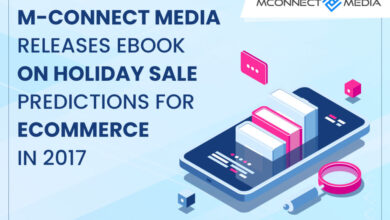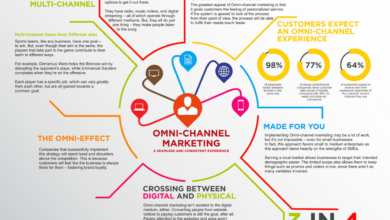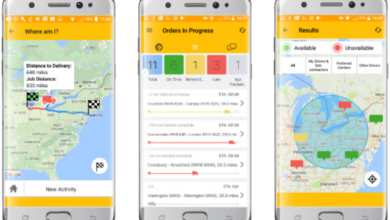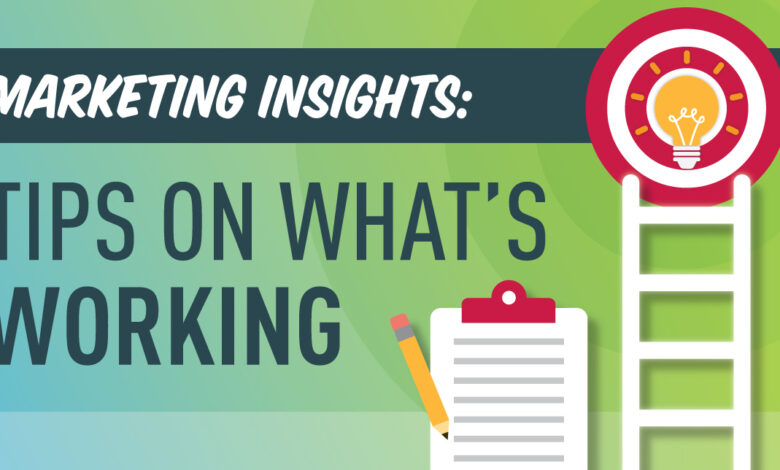
5 Essential Industry Tips for Your Marketing Strategy
5 Essential Industry Tips for Your Marketing Strategy: Ready to supercharge your marketing game? This isn’t your grandma’s marketing plan. We’re diving deep into five crucial strategies that go beyond the basics, focusing on actionable insights to help you connect with your audience, boost conversions, and ultimately, achieve real results. Get ready to learn how to understand your target audience like never before, leverage data-driven decisions, master content marketing magic, build a brand that resonates, and measure your ROI like a pro.
We’ll cover everything from crafting killer audience personas and using website analytics to your advantage, to designing engaging content that converts and building a loyal online community. We’ll even touch on the power (and pitfalls!) of influencer marketing. Think of this as your ultimate cheat sheet to marketing success in today’s dynamic landscape.
Understanding Your Target Audience

Knowing your audience is the bedrock of any successful marketing strategy. Without a clear understanding of who you’re trying to reach, your message will likely fall on deaf ears. This means going beyond simple demographics and delving into their motivations, values, and online habits. Let’s explore this crucial element with a hypothetical example from the sustainable fashion industry.
Three Distinct Audience Personas in Sustainable Fashion
To illustrate the importance of nuanced audience segmentation, let’s create three distinct personas for a hypothetical sustainable fashion brand: “EcoChic.”
Persona 1: The Conscious Consumer (Sarah)
Sarah is a 30-year-old marketing professional living in a major city. She’s environmentally conscious, values ethical production, and is willing to pay a premium for high-quality, sustainable clothing. She actively seeks out brands with transparent supply chains and strong social responsibility commitments. Online, Sarah follows sustainable fashion influencers on Instagram, reads articles on ethical consumption, and frequently engages with brands on social media.
Persona 2: The Budget-Conscious Eco-Warrior (David)
David is a 25-year-old college student with a strong environmental ethic but a limited budget. He’s passionate about sustainability but prioritizes affordability. He’s more likely to shop at secondhand stores or look for sales and discounts on sustainable brands. Online, he researches sustainable practices and actively seeks out affordable options, often using comparison websites and looking for deals.
Persona 3: The Luxury Eco-Conscious Shopper (Emily)
Emily is a 45-year-old successful entrepreneur who values luxury and quality. Sustainability is important to her, but it’s not her primary concern; she expects high-quality materials and impeccable craftsmanship. She’s willing to invest in premium sustainable brands that align with her sophisticated lifestyle. Online, she browses high-end fashion websites, reads luxury lifestyle blogs, and is less active on social media platforms compared to Sarah and David.
Marketing Approaches for Each Persona
The key differences in marketing approaches stem from each persona’s priorities and online behavior.
For Sarah (Conscious Consumer), marketing should focus on showcasing the brand’s ethical sourcing, transparent supply chains, and commitment to social responsibility. High-quality visuals and detailed product information are crucial. Instagram and Facebook are effective platforms, as is collaborating with sustainable fashion influencers.
For David (Budget-Conscious Eco-Warrior), the emphasis should be on affordability and accessibility. Highlighting sales, discounts, and budget-friendly options is essential. Utilizing platforms like Pinterest for DIY projects and upcycling ideas, and partnering with ethical secondhand retailers could be effective strategies.
For Emily (Luxury Eco-Conscious Shopper), the focus should be on the luxury aspects of the brand. High-quality photography, storytelling that emphasizes craftsmanship and exclusivity, and placement in upscale publications and websites would resonate. Email marketing and targeted advertising on platforms frequented by luxury consumers would be appropriate.
Communication Style Comparison
| Persona | Tone | Language | Platforms |
|---|---|---|---|
| Conscious Consumer (Sarah) | Informative, authentic, passionate | Detailed, descriptive, uses industry jargon sparingly | Instagram, Facebook, sustainable fashion blogs |
| Budget-Conscious Eco-Warrior (David) | Friendly, approachable, value-driven | Simple, clear, focuses on affordability | Pinterest, comparison websites, student-focused platforms |
| Luxury Eco-Conscious Shopper (Emily) | Sophisticated, refined, exclusive | Elegant, concise, emphasizes quality and craftsmanship | High-end fashion websites, luxury lifestyle magazines, email marketing |
Leveraging Data-Driven Insights
Understanding your target audience is crucial, but equally important is using data to refine your marketing efforts. Data-driven marketing allows you to move beyond guesswork and make informed decisions based on real-world results, maximizing your return on investment (ROI) and ensuring your strategies are truly effective. By analyzing website analytics and conducting A/B testing, you can pinpoint what’s working, what’s not, and how to optimize your campaigns for better performance.Website analytics provide a wealth of information about how users interact with your website.
This data can be used to identify the most effective marketing channels for your product or service by tracking where your website traffic originates. For example, if you see a significant increase in conversions from a specific social media platform, you can allocate more resources to that channel, potentially increasing your overall reach and sales. Conversely, if a particular campaign isn’t generating much traffic or conversions, you can adjust your strategy accordingly, avoiding wasted resources.
Website Traffic Data and Conversion Rate Optimization
Analyzing website traffic data offers valuable insights into user behavior and allows for targeted improvements to conversion rates. Understanding which pages users visit, how long they stay, and what actions they take (or don’t take) can pinpoint areas for optimization.
- Improve Call-to-Action (CTA) Placement and Design: If website analytics show a low click-through rate on your CTA buttons, consider A/B testing different button placements, colors, and wording. For instance, moving the button higher on the page or changing its color from blue to green might significantly improve click-through rates. Data will reveal which variation performs best.
- Optimize Website Navigation: High bounce rates on specific pages may indicate navigation issues. Analyze user flow to identify pages with high bounce rates and make improvements to website structure or content to improve user experience and reduce bounce rate. For example, simplifying the navigation menu or adding clearer internal links could guide users more effectively towards conversion points.
- Personalize User Experience: By segmenting your audience based on website behavior (e.g., pages visited, time spent on site), you can personalize content and offers to increase relevance and engagement. For example, showing targeted product recommendations based on browsing history can significantly improve conversion rates. Analyzing which segments respond best to which types of content allows for optimized targeting and resource allocation.
A/B Testing for Landing Page Optimization, 5 essential industry tips for your marketing strategy
A/B testing is a crucial tool for optimizing landing pages. This involves creating two versions of a landing page – version A (the control) and version B (the variation) – and showing each version to different segments of your audience. By tracking key metrics like conversion rates, click-through rates, and time spent on page, you can determine which version performs better and iterate accordingly.For example, you might A/B test two versions of a landing page: one with a headline focused on benefits and another focused on features.
By tracking conversion rates, you can identify which headline resonates better with your target audience and optimize your page accordingly. This iterative process of testing and refining ensures continuous improvement in landing page performance. A well-designed A/B test will clearly isolate the variable being tested to accurately assess its impact on key performance indicators (KPIs).
Content Marketing Strategies

Crafting a compelling content marketing strategy is crucial for reaching your target audience and achieving your marketing goals. It’s about creating valuable, relevant, and consistent content to attract and retain a clearly defined audience — and, ultimately, to drive profitable customer action. This involves understanding your audience’s needs and preferences and tailoring your content to resonate with them.
We’ll explore how different content formats can effectively reach various audience segments.
Content Formats for Different Audience Segments
To illustrate effective content marketing, let’s consider a fictional company, “EcoClean,” which sells eco-friendly cleaning products. We’ll create three distinct content pieces promoting their new all-purpose cleaner, targeting three different audience segments: environmentally conscious millennials, busy working parents, and small business owners.
Blog Post: Targeting Environmentally Conscious Millennials
This blog post will focus on the environmental benefits of EcoClean’s all-purpose cleaner. The headline will be: “EcoClean: Clean Your Home, Clean Your Conscience.” The blog post will detail the product’s biodegradable ingredients, sustainable packaging, and carbon-neutral manufacturing process. It will include statistics comparing EcoClean’s environmental impact to traditional cleaning products. The call-to-action will be: “Shop EcoClean and make a difference today! Visit our website to learn more and purchase.”
Infographic: Targeting Busy Working Parents
This infographic will highlight the time-saving and convenience aspects of EcoClean’s all-purpose cleaner. The headline will be: “EcoClean: Less Time Cleaning, More Time with Family.” The infographic will use visually appealing charts and graphs to showcase how EcoClean cleans effectively in less time than competing products. It will emphasize the product’s versatility, showing its use on various surfaces.
So, you’re crafting those 5 essential industry tips for your marketing strategy? Remember, efficient app development is key to seamless campaign execution. Check out this insightful article on domino app dev the low code and pro code future to see how streamlined processes can boost your results. Then, integrate those learnings into your marketing strategy tips – it’s all about optimization!
The call-to-action will be a clear visual prompt to visit the EcoClean website for a special offer.
Video Script: Targeting Small Business Owners
This video script will focus on the cost-effectiveness and professional image associated with using EcoClean. The headline will be: “EcoClean: Boost Your Bottom Line and Your Brand Image.” The video will feature a short interview with a satisfied small business owner, showcasing the cleaner’s effectiveness in a professional setting. The script will emphasize the product’s cost-per-use compared to other options and its ability to enhance the overall professional appearance of a business.
The call-to-action will be: “Contact us today for a bulk order discount and elevate your business’s sustainability profile!”
Content Calendar
Below is a sample three-month content calendar outlining a publishing schedule for these three content formats. This calendar allows for consistent content delivery and maximizes reach across different platforms.
| Month | Week | Content Format | Target Audience | Platform |
|---|---|---|---|---|
| October | 1 | Blog Post | Environmentally Conscious Millennials | EcoClean Blog, Social Media |
| October | 3 | Infographic | Busy Working Parents | Social Media, Email Marketing |
| November | 1 | Video | Small Business Owners | YouTube, LinkedIn |
| November | 4 | Blog Post (repurposed content from infographic) | Busy Working Parents | EcoClean Blog |
| December | 2 | Infographic (repurposed content from video) | Small Business Owners | Social Media |
| December | 4 | Video (customer testimonial focusing on environmental aspects) | Environmentally Conscious Millennials | YouTube, Social Media |
Building Brand Awareness and Engagement
Building a recognizable and engaging brand is crucial for long-term marketing success. It’s not just about selling a product or service; it’s about cultivating a loyal customer base who connect with your brand’s values and personality. This involves a consistent brand presence across all platforms and fostering a sense of community around your offerings.Consistent branding ensures a unified message reaches your target audience, regardless of where they encounter your brand.
A disjointed brand image across different platforms can confuse customers and dilute your message, hindering your ability to build trust and recognition.
Consistent Branding Across Marketing Channels
Maintaining a consistent brand voice, visual identity (logo, color palette, typography), and messaging across your website, social media profiles, and email marketing is paramount. Your website should reflect the same brand personality as your Instagram feed, and your email newsletters should maintain the same tone and style. For example, a company known for its playful and quirky style on social media shouldn’t suddenly adopt a formal and serious tone on its website.
This inconsistency would create cognitive dissonance for the customer, undermining brand trust. Imagine a luxury car brand using bright, cartoonish graphics on its social media – it would clash drastically with the brand’s established image of sophistication and elegance.
Strategies for Building a Strong Online Community
Creating a strong online community around your brand fosters loyalty and provides valuable feedback. Three effective strategies include:
Firstly, actively engage with your audience on social media. Respond to comments and messages promptly, run contests and giveaways, and ask for feedback. This shows you value your customers’ opinions and are invested in building relationships. For example, a skincare brand could host a weekly “Ask Me Anything” session on Instagram Live with a dermatologist, fostering engagement and providing valuable information to its followers.
Secondly, create a dedicated online forum or community group. This provides a space for customers to connect with each other and with your brand. Moderating this space is crucial to ensure positive interactions and address any concerns promptly. Think of online communities like those built around gaming brands – these foster a sense of belonging and shared passion among users, enhancing brand loyalty.
Thirdly, utilize user-generated content. Encourage customers to share their experiences with your brand on social media using a unique hashtag. Reposting this content showcases social proof and builds authenticity. Many clothing brands leverage user-generated content by reposting photos of customers wearing their clothes, creating a sense of community and showcasing the product in real-life scenarios.
Benefits and Drawbacks of Influencer Marketing
Influencer marketing can be a powerful tool for reaching a wider audience, but it’s essential to approach it strategically.
Benefits include increased brand awareness, improved reach, and enhanced credibility through association with trusted influencers. A successful campaign could involve partnering with an influencer whose values align with your brand and whose audience overlaps with your target demographic. For instance, a sustainable clothing brand might partner with an environmentally conscious influencer to promote their products, reaching a highly engaged and relevant audience.
Drawbacks include the potential for negative publicity if an influencer acts unethically or their audience is not genuinely engaged. Measuring ROI can also be challenging. An unsuccessful campaign might involve selecting an influencer with a low engagement rate or whose audience doesn’t align with the product’s target market. For example, a high-end luxury watch brand partnering with an influencer known for promoting fast fashion would likely result in a misalignment of brand values and a poor campaign outcome.
Glossier’s early success can be attributed to smart influencer marketing partnerships that fostered authenticity and aligned with their brand values, while other brands have faced backlash for inauthentic or overly promotional influencer campaigns.
Measuring and Optimizing Marketing ROI
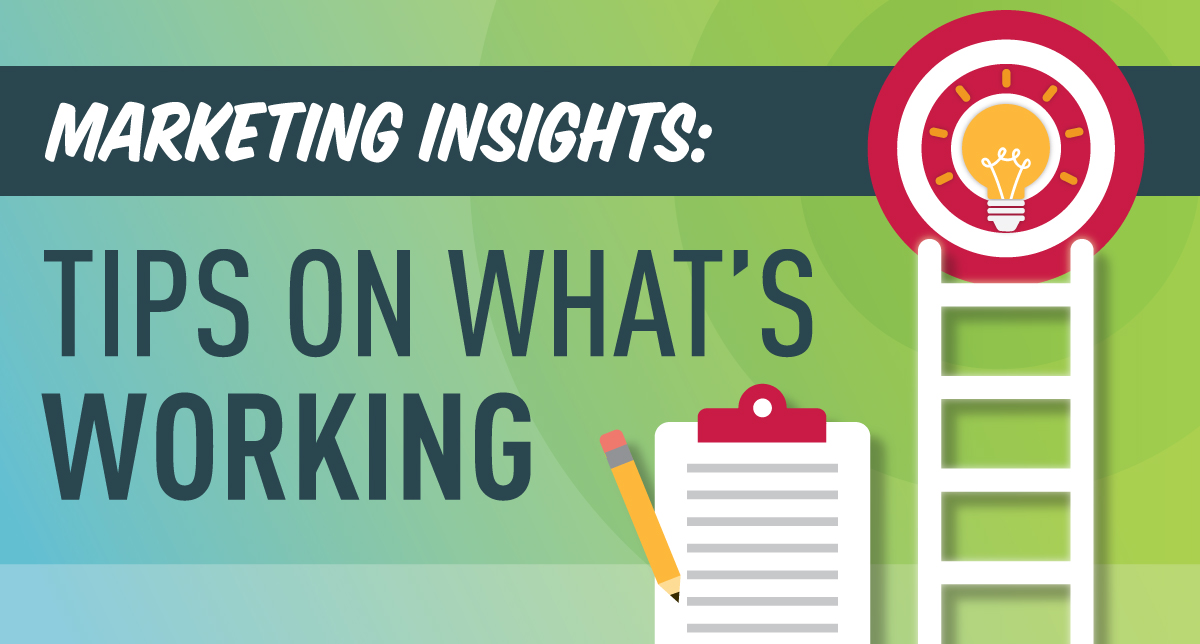
Understanding your marketing return on investment (ROI) is crucial for sustainable growth. Without tracking key metrics, you’re essentially flying blind, spending money without knowing what’s working and what’s not. This section will Artikel three essential KPIs, show you how to track them, and guide you on analyzing the data to improve future campaigns.
Key Performance Indicators (KPIs) for Measuring Marketing Success
Three key performance indicators offer a comprehensive view of your marketing effectiveness: website conversion rate, customer acquisition cost (CAC), and return on ad spend (ROAS). These metrics provide a balanced perspective, encompassing website engagement, cost efficiency, and the direct revenue generated from your marketing efforts.
Tracking KPIs Using Marketing Analytics Tools
Tracking these KPIs requires leveraging readily available analytics tools. The following table illustrates how different platforms can be used to monitor these vital metrics:
| KPI | Description | Tracking Tool | Data Source/Method |
|---|---|---|---|
| Website Conversion Rate | Percentage of website visitors who complete a desired action (e.g., purchase, signup). | Google Analytics | Track conversions using Google Analytics’ goal setup. Monitor the conversion rate over time and across different traffic sources. |
| Customer Acquisition Cost (CAC) | Total marketing and sales costs divided by the number of new customers acquired. | Marketing Attribution Platforms (e.g., Adobe Analytics, Google Marketing Platform) | Track marketing spend across all channels and attribute it to customer acquisition. Divide total marketing costs by the number of new customers acquired within a specific timeframe. |
| Return on Ad Spend (ROAS) | Revenue generated from advertising campaigns divided by the cost of those campaigns. | Google Ads, Facebook Ads Manager | Use the built-in reporting features within each platform. Monitor ROAS for each campaign and adjust bids/targeting based on performance. |
Analyzing Marketing Data and Optimizing Campaigns
Analyzing your marketing data is not just about looking at numbers; it’s about understanding thestory* those numbers tell. For example, a low conversion rate might indicate issues with website usability or unclear calls to action. A high CAC suggests your marketing efforts may be inefficient or targeting the wrong audience. A low ROAS might point to ineffective ad copy, poor targeting, or bidding strategies.By regularly analyzing these KPIs, you can identify areas for improvement.
For instance, if your website conversion rate is low, you might A/B test different calls to action or redesign your landing pages. If your CAC is high, you might refine your targeting parameters, explore different marketing channels, or optimize your sales process. A low ROAS could lead you to adjust your bidding strategies, refine your ad creatives, or retarget users who have shown interest but haven’t converted.
This iterative process of analysis and optimization is key to maximizing your marketing ROI.
Last Point
So there you have it – five essential industry tips to catapult your marketing strategy to the next level. Remember, marketing isn’t a one-size-fits-all solution. It’s about understanding your audience, adapting to trends, and constantly iterating based on data. By implementing these strategies and consistently measuring your results, you’ll be well on your way to building a thriving and profitable business.
Now go forth and conquer the marketing world!
FAQ Overview: 5 Essential Industry Tips For Your Marketing Strategy
What if I don’t have a large marketing budget?
Focus on organic strategies like content marketing, , and building a strong social media presence. These require time and effort, but can yield impressive results without hefty financial investments.
How often should I adjust my marketing strategy?
Regularly! At least quarterly, review your KPIs and make adjustments based on performance data. The marketing landscape is constantly changing, so staying agile is key.
What are some free tools to help with marketing analytics?
Google Analytics is a powerful and free tool for website analytics. Many social media platforms also offer free insights into your audience engagement.
How do I choose the right influencers for my brand?
Look for influencers whose audience aligns with your target market and whose values resonate with your brand. Authenticity is key – avoid influencers who seem inauthentic or solely focused on promoting anything and everything.
